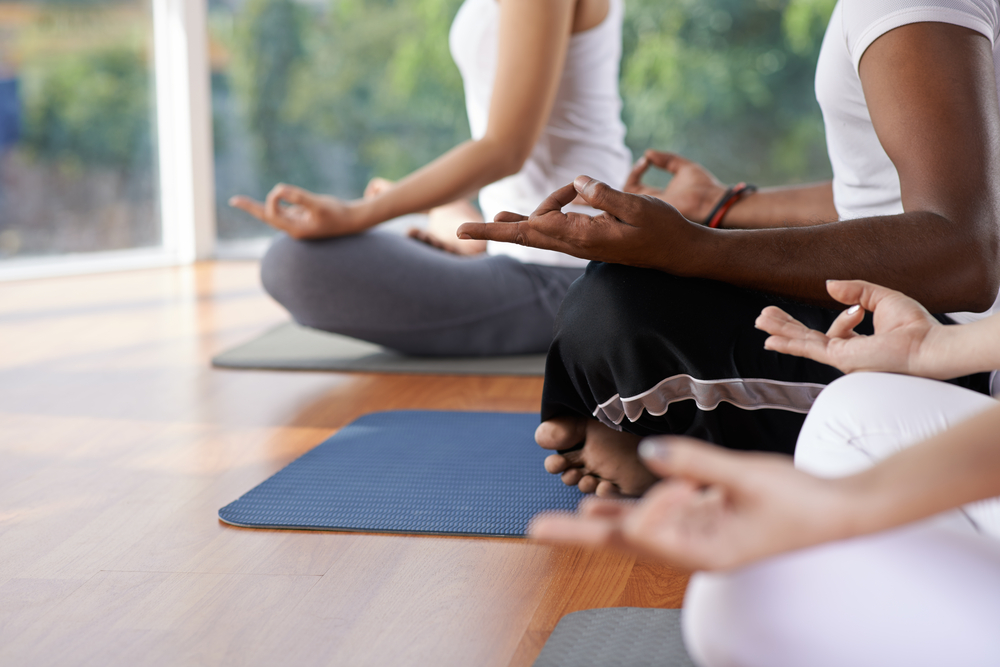Downward Dog, Doctor's Order: Yoga Could Ease Back Pain

To ease low back pain, you may want try a downward dog: A new study suggests that doing yoga may be as effective as physical therapy for reducing low back pain.
The study looked at a specific yoga routine designed by experts. Some yoga poses could be harmful to the back.
About 10 percent of U.S. adults have chronic low back pain, according to the study, published today (June 19) in the journal Annals of Internal Medicine. And around 80 percent of U.S. adults will experience low back pain at some point in their lives, according to the National Institutes of Health (NIH).
Low back pain can have a large effect on people's lives: It's a leading reason why people miss work, the NIH says. In addition, low back pain appears to take a larger toll on people of racial and ethnic minority groups and on poorer people, according to the study. [5 Surprising Facts About Pain]
The most common nondrug treatment for low back pain is physical therapy, which involves individually tailored routines of stretching and strengthening exercises, according to the study. But many patients report that they aren't satisfied with the treatments that health care providers recommend.
In the new study, the researchers at Boston Medical Center wanted to see how yoga stacked up to physical therapy as a treatment for low back pain. Several meta-analyses and randomized controlled trials have found that yoga can be effective for easing low back pain, but yoga had never been directly compared to physical therapy.
More than 300 people with low back pain from low-income, racially diverse neighborhoods were included in the study. The study subjects had all experienced low back pain for at least three months, and in the previous week, had rated their pain at least a 4 on a scale of 0 to 10. In addition, all the people in the study had "nonspecific" low back pain, meaning that it wasn't due to a specific cause, such as a pinched nerve.
Sign up for the Live Science daily newsletter now
Get the world’s most fascinating discoveries delivered straight to your inbox.
The researchers randomly assigned the people in the study to the yoga group, the physical therapy group or the control group. Over a 12-week period, the people in the yoga group attended weekly, 75-minute yoga classes, while those in the physical therapy group went to hour-long physical therapy sessions 15 times. In the control group, patients were given educational materials about how to cope with low back pain, but did not attend any classes.
The researchers noted that the yoga group followed a routine that was devised using input from yoga experts and previous studies looking at yoga and back pain. In other words, it was a specialized type of yoga class. There are yoga poses that could injure the back, studies have shown.
At the end of the 12-week period, the researchers found that the yoga classes were as effective as physical therapy in reducing pain, improving function and lowering people's use of pain medications. For example, yoga patients reported, on average, a 2.1-point decrease in pain on the pain scale, and physical therapy patients reported a 2.6-point decrease. The people in the control group reported a 1.3-point decrease on the pain scale, on average.
In addition, the improvements were maintained in the people who continued with either yoga or physical therapy for a year following the study. [Mind Games: 7 Reasons You Should Meditate]
One limitation of the research was that less than half of the people in the study attended at least three-quarters of the assigned yoga or physical therapy sessions. In an editorial published alongside the study in the same journal, Dr. Douglas Chang, an orthopedic surgeon at the University of California, San Diego, and Dr. Stefan Kertesz, an associate professor of preventive medicine at the University of Alabama School of Medicine, said that future studies should investigate why so many of the participants failed to attend all the sessions.
In addition, the authors of the editorial noted that the improvements that the yoga and physical therapy patients reported were small, and only half of the yoga patients and one-third of the physical therapy patients reported improvements.
The study was funded by the National Center for Complementary and Integrative Health, which is a part of the National Institutes of Health.
Originally published on Live Science.











